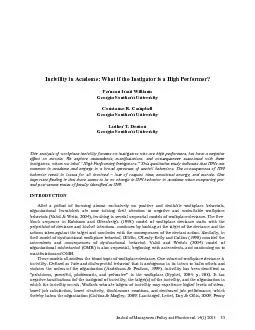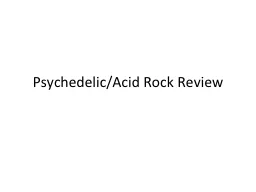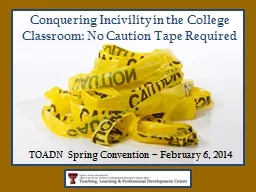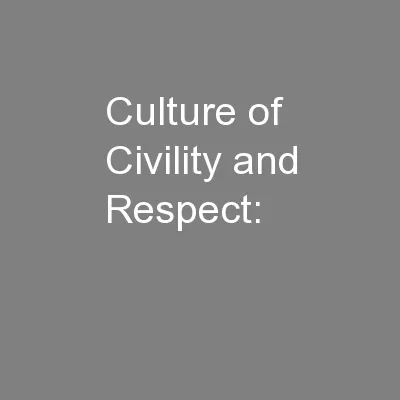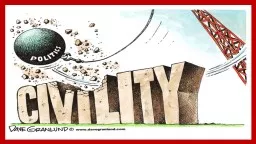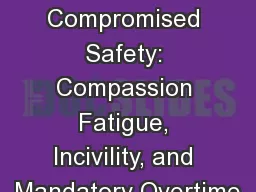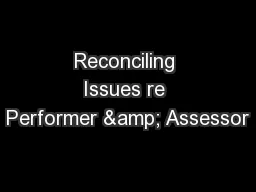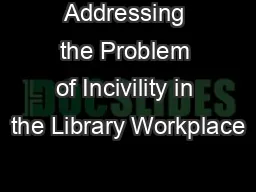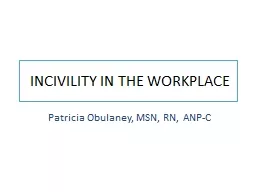PDF-Incivility in Academe: What if the Instigator is a High Performer? Fer
Author : liane-varnes | Published Date : 2015-08-16
Journal of Management Policy and Practice vol 141 2013 35 Spector 2005 Organizations are also harmed by incivility when targets resolve the problem by leaving the
Presentation Embed Code
Download Presentation
Download Presentation The PPT/PDF document "Incivility in Academe: What if the Insti..." is the property of its rightful owner. Permission is granted to download and print the materials on this website for personal, non-commercial use only, and to display it on your personal computer provided you do not modify the materials and that you retain all copyright notices contained in the materials. By downloading content from our website, you accept the terms of this agreement.
Incivility in Academe: What if the Instigator is a High Performer? Fer: Transcript
Download Rules Of Document
"Incivility in Academe: What if the Instigator is a High Performer? Fer"The content belongs to its owner. You may download and print it for personal use, without modification, and keep all copyright notices. By downloading, you agree to these terms.
Related Documents

